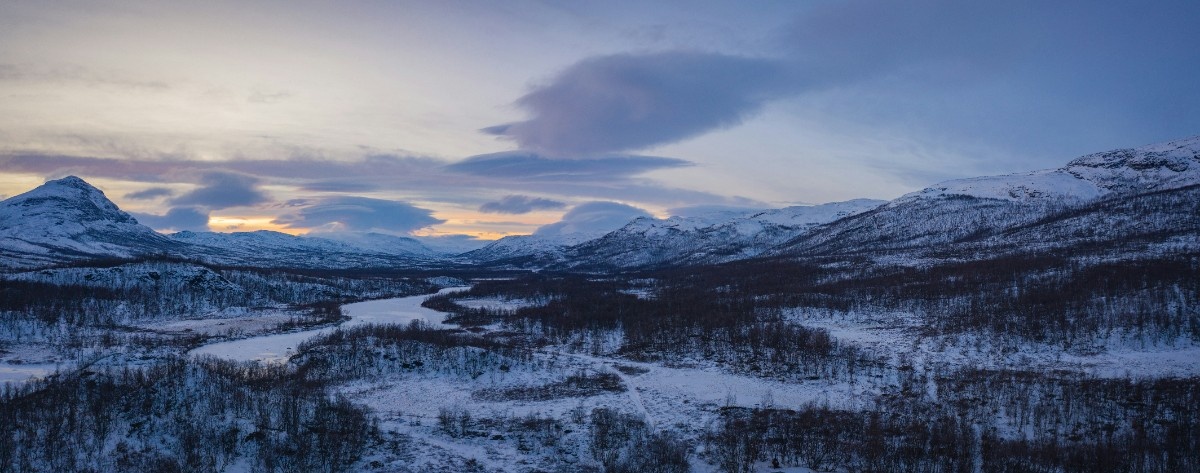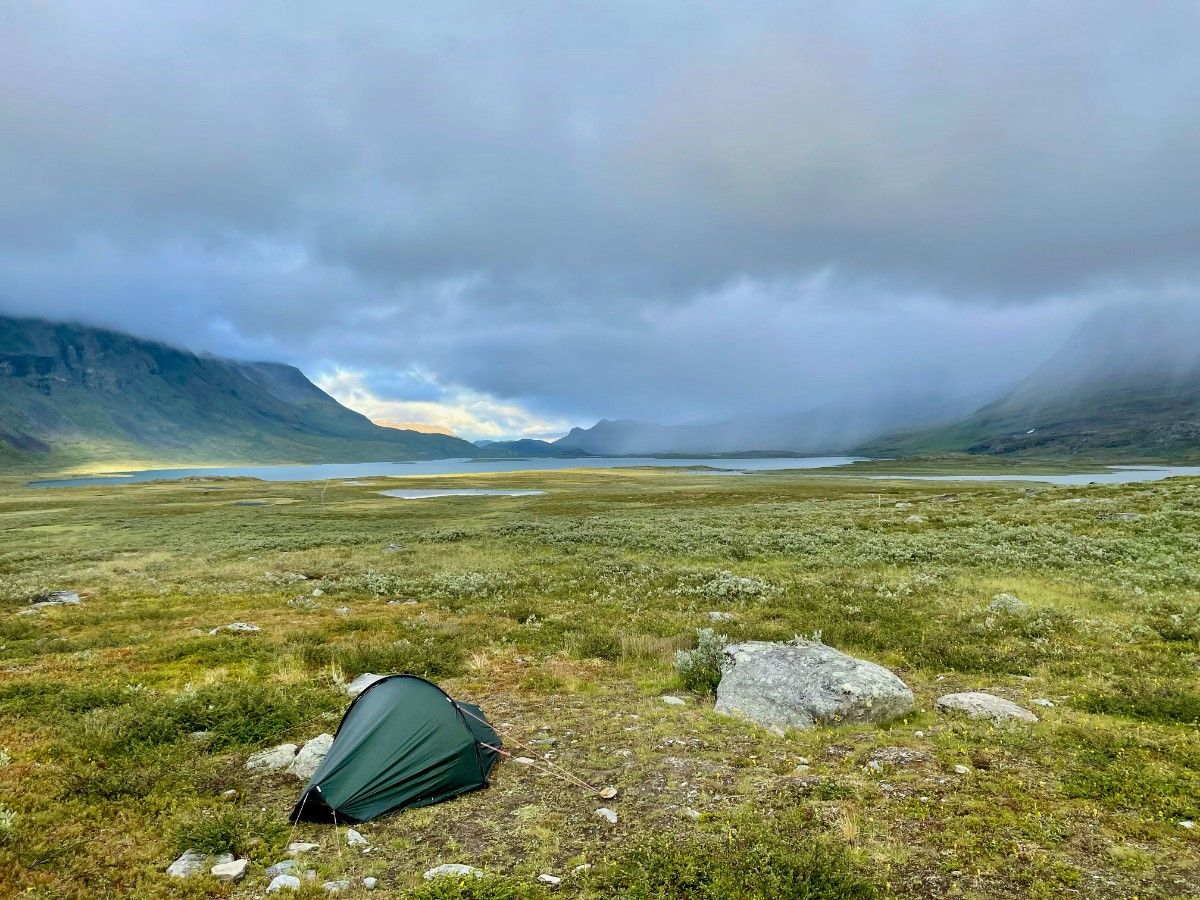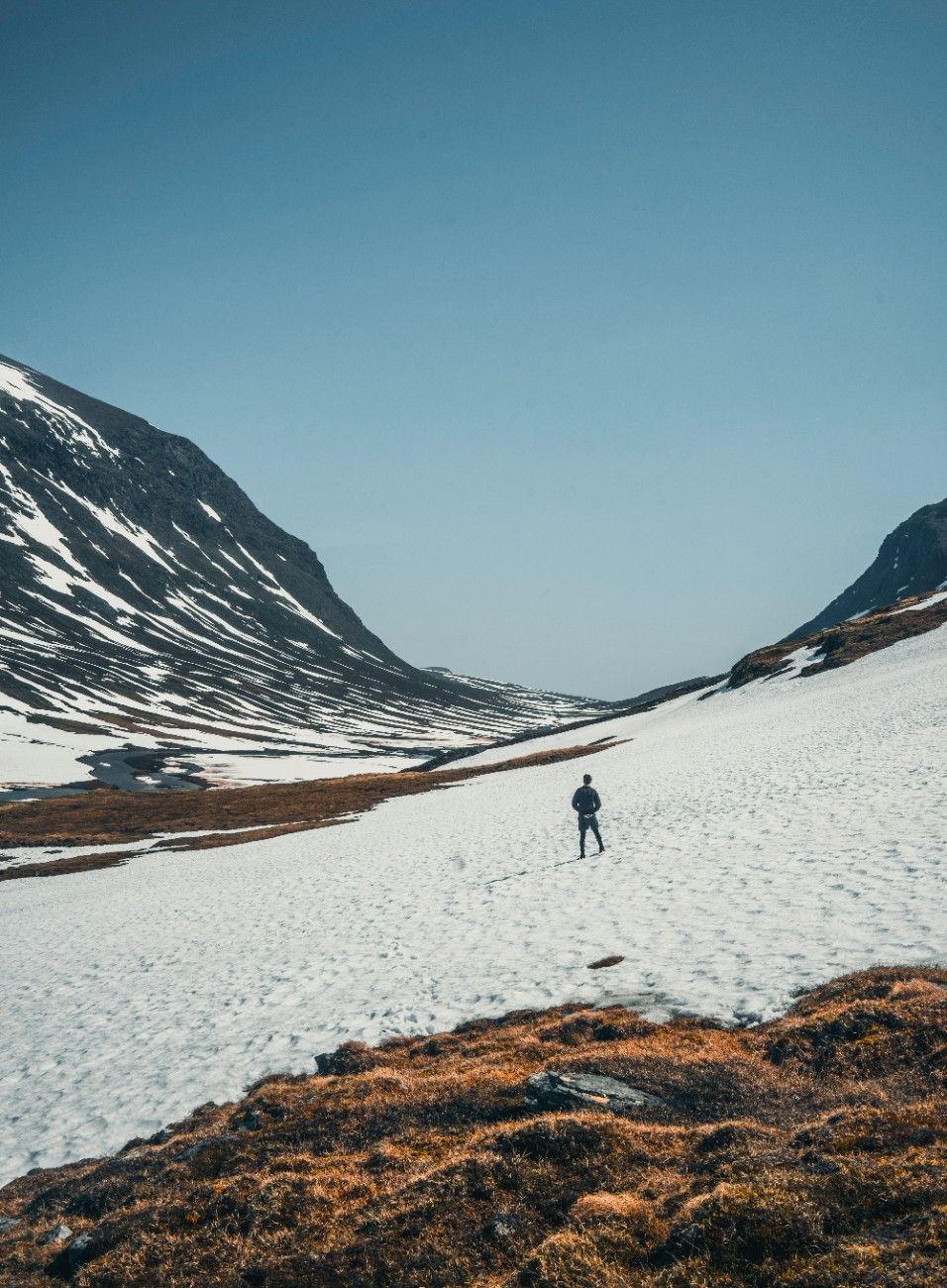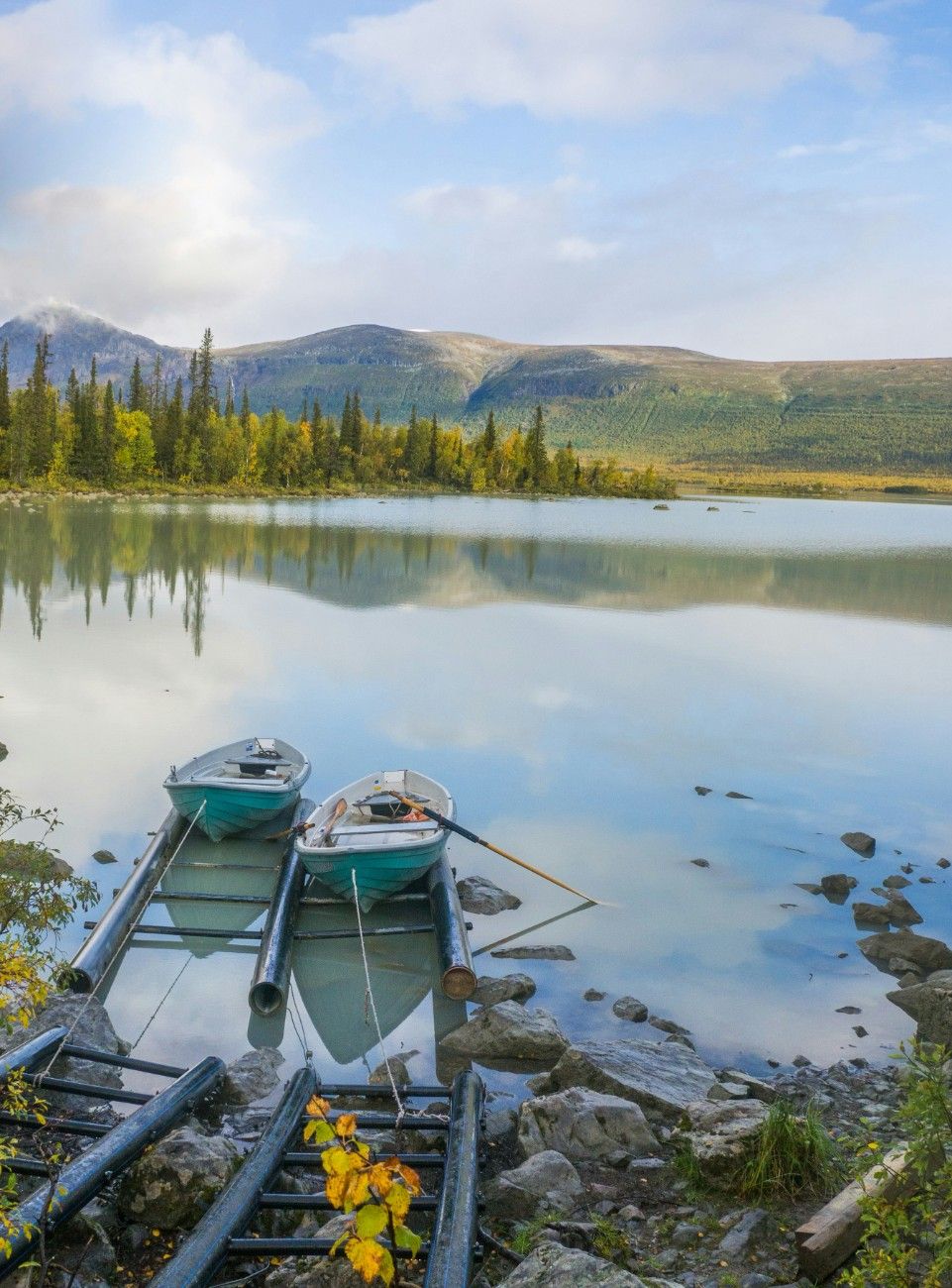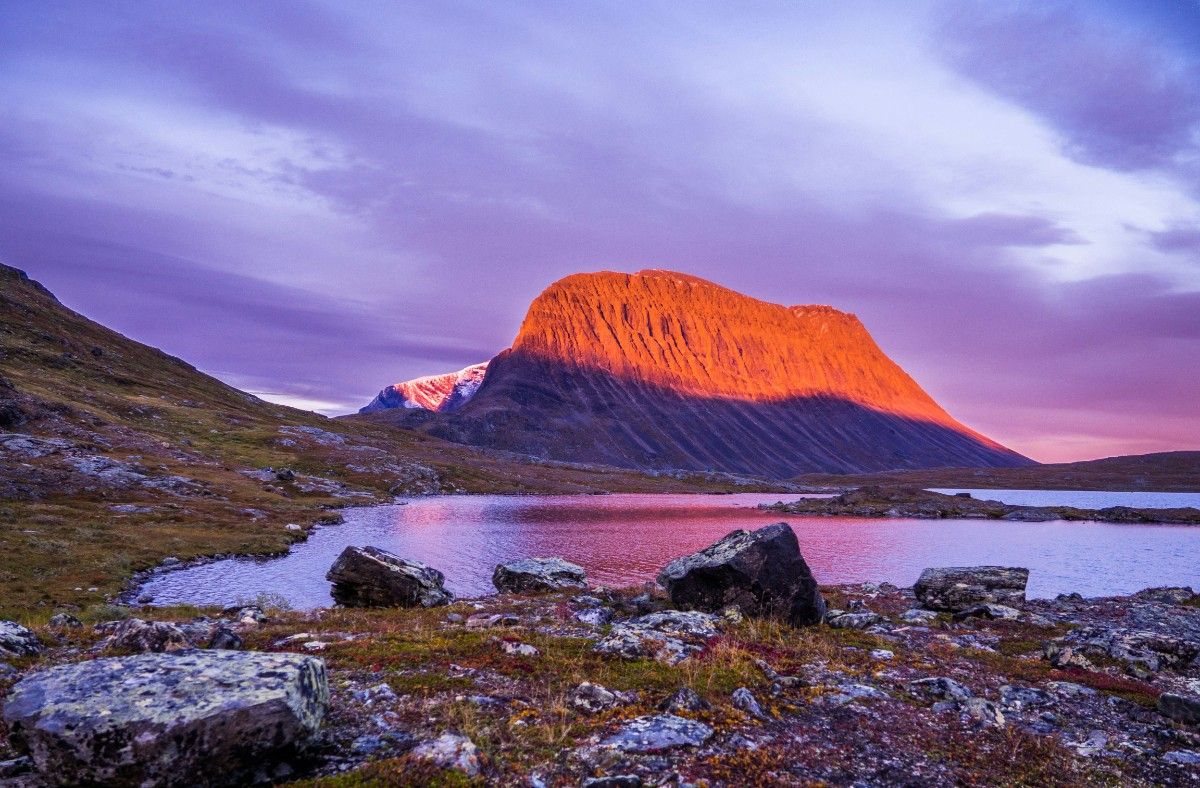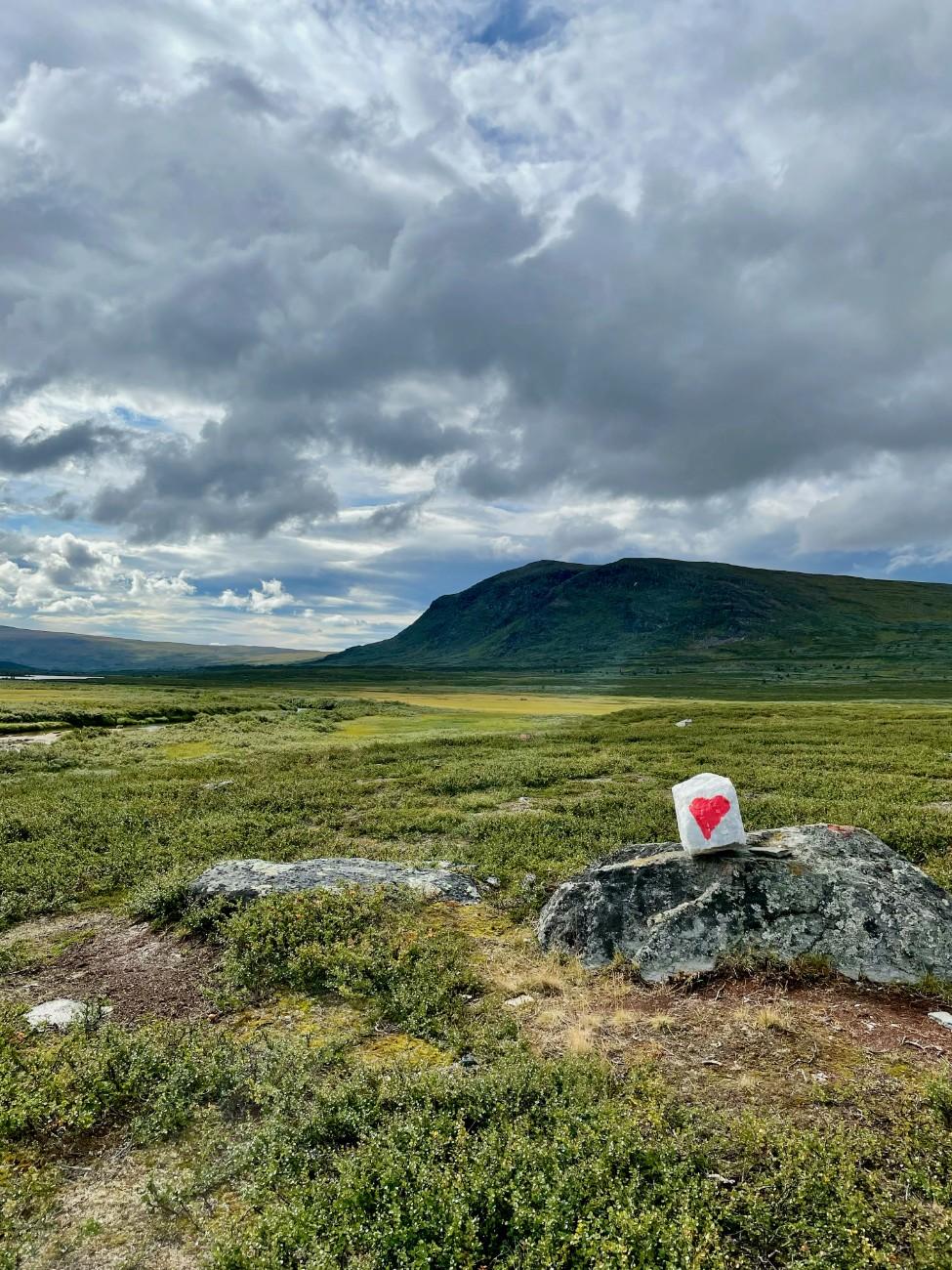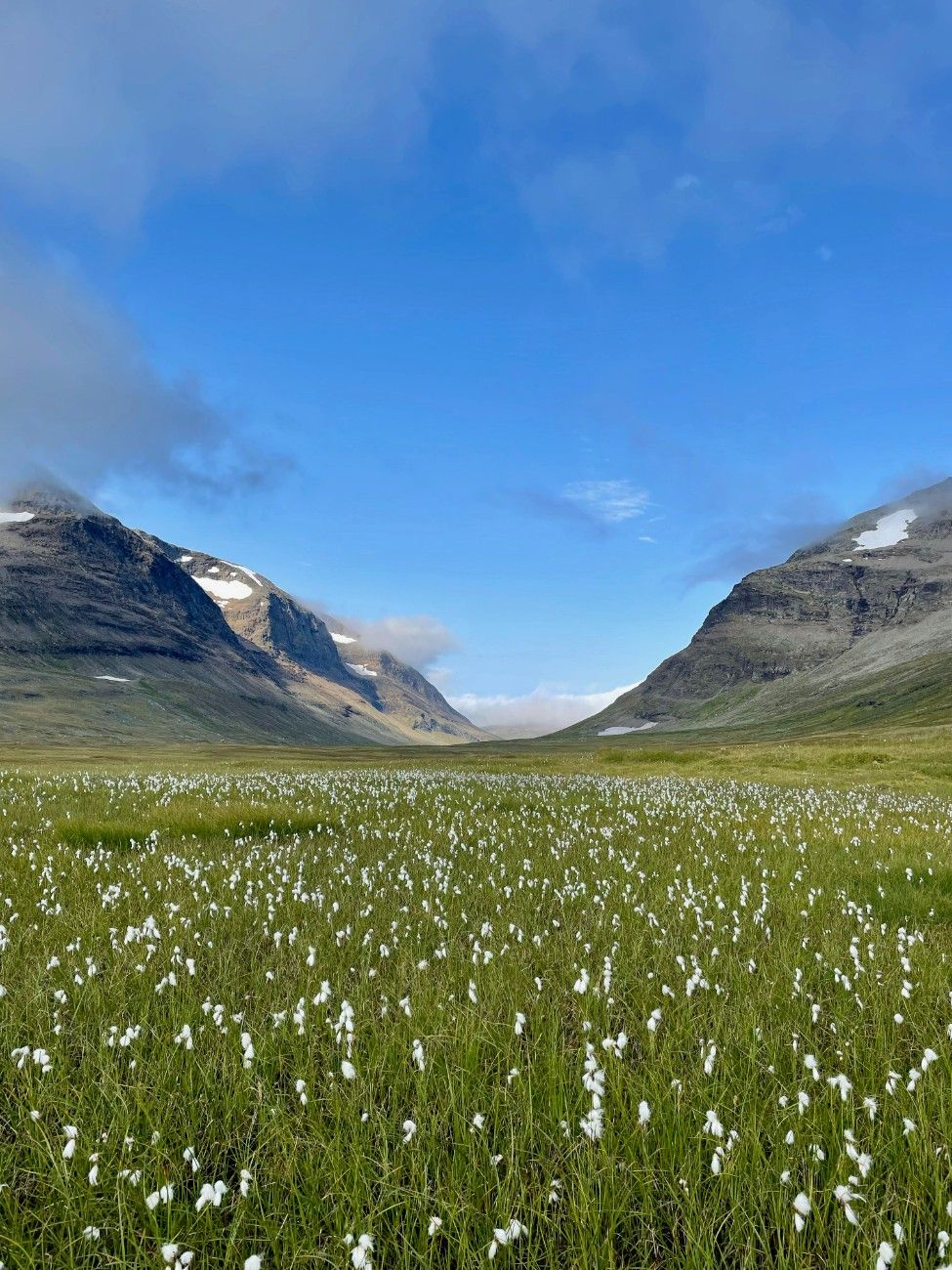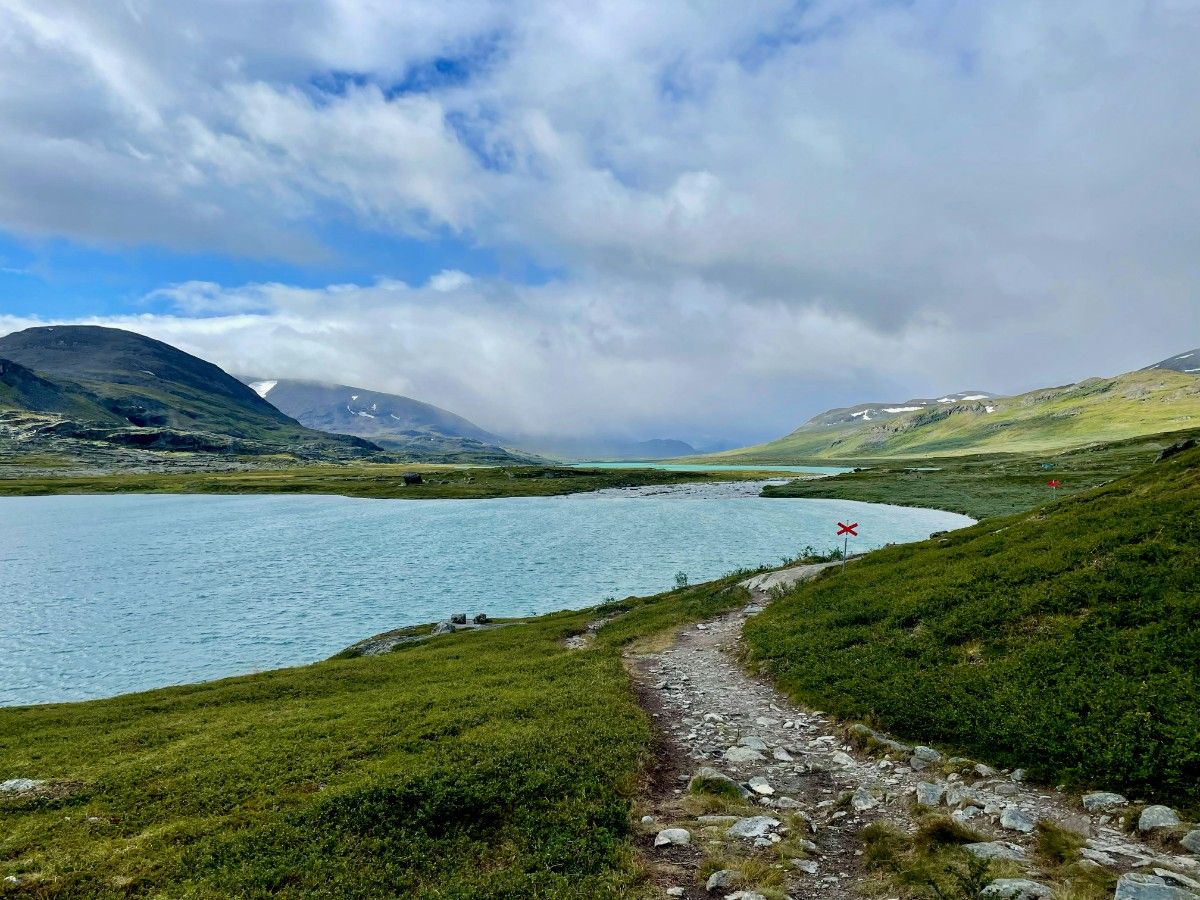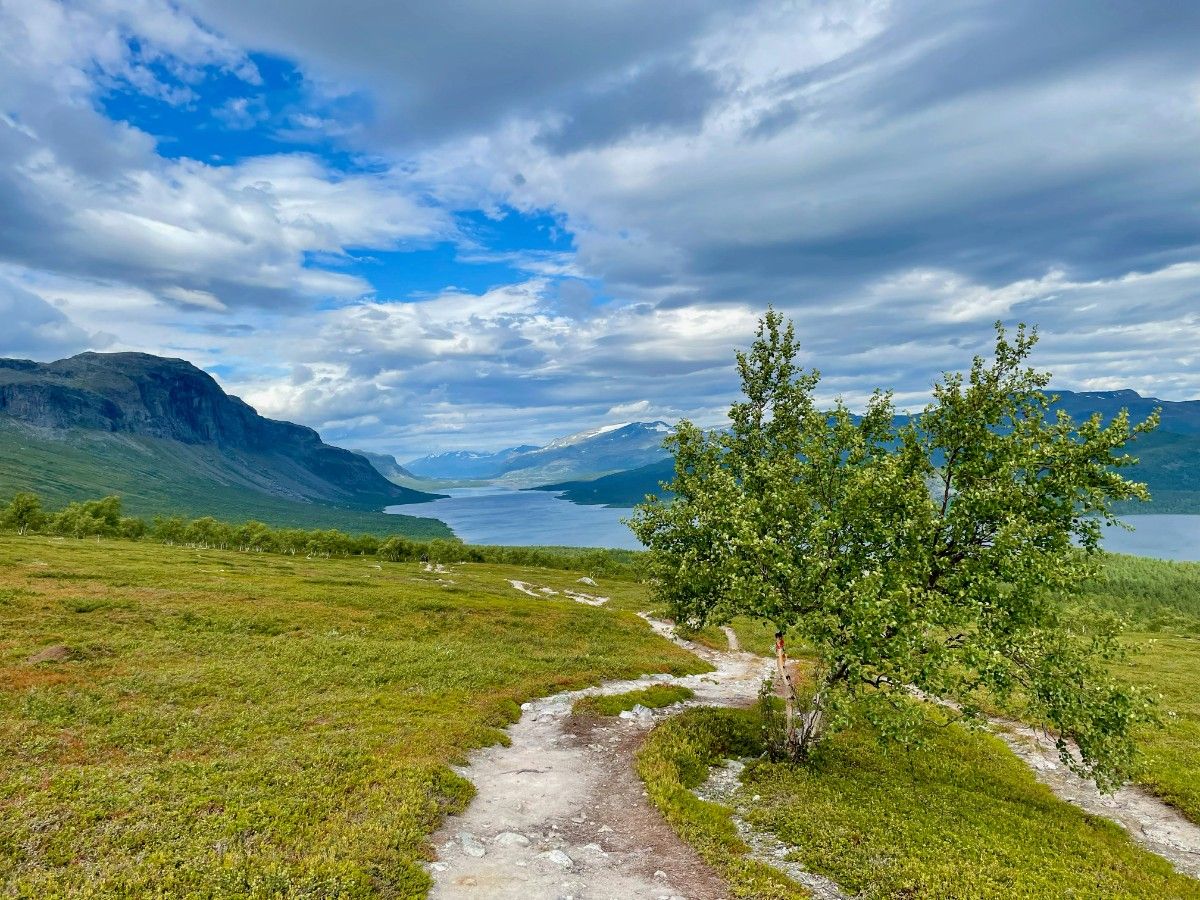Introduction to the Kungsleden Trail
Overview of the Kungsleden Trail
The Kungsleden trail, also known as "The King's Trail," is a magnificent hiking route that winds through the breathtaking landscape of northern Sweden. Stretching approximately 440 kilometres (270 miles) from Abisko in the north to Hemavan in the south, this iconic trail traverses the majestic wilderness of the Swedish Lapland. The Kungsleden offers hikers an unparalleled opportunity to immerse themselves in the pristine beauty of the Arctic tundra, lush forests, and stunning mountain vistas.
The trail is divided into four main sections, each with its own unique characteristics and challenges. The northernmost section, from Abisko to Kebnekaise, is perhaps the most popular and well-travelled, offering hikers a chance to experience the midnight sun and the stunning beauty of the Abisko National Park. The section from Kebnekaise to Jäkkvik is known for its challenging terrain and breathtaking views of Sweden's highest mountain, Mount Kebnekaise. The third section, from Jäkkvik to Ammarnäs, takes hikers through the heart of the Lapland wilderness, with its vast forests and pristine lakes. The final section, from Ammarnäs to Hemavan, offers a more gentle terrain and the opportunity to explore the picturesque villages and cultural heritage of the region.
History and Significance of the Kungsleden Trail
The Kungsleden trail has a rich history that dates back to the early 20th century. The idea for the trail was first conceived by the Swedish Tourist Association (STF) in the late 1800s, as a way to promote tourism and outdoor recreation in the Swedish Lapland. However, it wasn't until the 1920s that the first sections of the trail were officially established, with the help of local Sami communities and volunteers.
Over the years, the Kungsleden has become an iconic symbol of Swedish culture and a testament to the country's deep connection to nature. The trail has been featured in countless books, movies, and documentaries, inspiring generations of hikers and nature enthusiasts from around the world. Today, the Kungsleden is recognised as one of the world's premier long-distance hiking trails, attracting thousands of visitors each year who come to experience the raw beauty and challenges of the Swedish wilderness.
Why Hike the Kungsleden Trail
Hiking the Kungsleden trail is an experience like no other, offering a unique blend of natural beauty, cultural richness, and personal growth. The trail provides hikers with the opportunity to disconnect from the stresses of modern life and reconnect with nature in its purest form. Whether you're seeking solitude and reflection, or the camaraderie of fellow hikers, the Kungsleden has something to offer everyone.
One of the main draws of the Kungsleden is the stunning natural beauty of the Swedish Lapland. From the lush forests and glistening lakes to the rugged mountain peaks and expansive tundra, the trail offers a visual feast for nature lovers and outdoor enthusiasts alike. The opportunity to witness the midnight sun, the vibrant colours of the autumn foliage, or the ethereal dance of the northern lights is an experience that will stay with you forever.
In addition to the natural wonders, hiking the Kungsleden also offers a chance to engage with the rich cultural heritage of the region. The trail passes through traditional Sami villages and reindeer herding grounds, providing hikers with a unique glimpse into the indigenous way of life. The warm hospitality of the local communities, combined with the opportunity to sample traditional Sami cuisine and handicrafts, adds a deep cultural dimension to the hiking experience.
Planning Your Kungsleden Adventure
When to Hike the Kungsleden Trail
One of the most important considerations when planning your Kungsleden adventure is deciding when to go. The hiking season on the Kungsleden typically runs from mid-June to late September, with July and August being the peak months. During this time, the weather is generally more stable, with long daylight hours and milder temperatures. However, it's important to keep in mind that the weather in the Swedish Lapland can be unpredictable, even in the summer months, so it's essential to be prepared for varying conditions.
If you're looking to avoid the crowds and enjoy a more solitary hiking experience, consider planning your trip for the shoulder seasons of June or September. While the weather may be slightly cooler and the daylight hours shorter, you'll be rewarded with a more peaceful and intimate experience of the trail. Keep in mind, however, that some mountain huts and facilities may have limited services or be closed entirely during these times, so it's important to plan accordingly.
Choosing Your Route and Duration
Another key aspect of planning your Kungsleden adventure is deciding on your route and duration. The full length of the Kungsleden trail is 440 kilometres (270 miles), which typically takes experienced hikers around 3-4 weeks to complete. However, many hikers choose to tackle smaller sections of the trail, depending on their time constraints, fitness level, and personal preferences.
If you're short on time or new to long-distance hiking, consider focusing on one of the more popular sections of the trail, such as the northern section from Abisko to Kebnekaise. This section is well-maintained and offers a good balance of stunning scenery and comfortable mountain huts, making it a great introduction to the Kungsleden. For more experienced hikers looking for a challenge, the remote and rugged sections of the trail, such as the stretch from Jäkkvik to Ammarnäs, offer a true wilderness experience.
When planning your route, it's important to consider your daily hiking distances and the location of mountain huts and resupply points along the way. Most hikers aim to cover between 10-20 kilometres (6-12 miles) per day, depending on the terrain and their fitness level. Be sure to factor in rest days and buffer time for unexpected weather or other delays.
Accommodation and Resupply Options
One of the unique aspects of hiking the Kungsleden trail is the network of mountain huts that provide accommodation and resupply options along the way. These huts, operated by the Swedish Tourist Association (STF), offer a comfortable and convenient base for hikers, with amenities such as bunk beds, kitchens, and saunas.
When planning your trip, it's important to research the location and amenities of the mountain huts along your route, and to make reservations in advance, especially during the peak season. Keep in mind that some huts may have limited capacity or be closed entirely during the shoulder seasons, so it's essential to plan accordingly.
In addition to the mountain huts, the Kungsleden also offers opportunities for wild camping, allowing hikers to pitch their tents in the wilderness and experience a more immersive connection with nature. However, it's important to follow Leave No Trace principles and respect the delicate ecosystem of the region.
When it comes to resupply options, most hikers choose to stock up on food and other essentials at the larger towns and villages along the trail, such as Abisko, Jäkkvik, and Ammarnäs. Some mountain huts also offer limited supplies and provisions, but it's important to check in advance and not rely solely on these options.
Gear and Equipment
Proper gear and equipment are essential for a safe and enjoyable Kungsleden adventure. When planning your trip, be sure to invest in high-quality, durable gear that can withstand the rigors of the trail and the varying weather conditions of the Swedish Lapland.
Some essential items to consider include:
- A sturdy, comfortable backpack with ample capacity for your gear and supplies
- A reliable, four-season tent or shelter system
- A warm, insulated sleeping bag and sleeping mat
- Waterproof and breathable hiking boots with good ankle support
- Layered clothing systems, including moisture-wicking base layers, insulating mid-layers, and waterproof/windproof outer layers
- Trekking poles for stability and support on uneven terrain
- A reliable stove and fuel system for cooking meals
- Water filtration or purification system for safe drinking water
- First aid kit and emergency supplies
- Navigation tools, such as maps, compass, and GPS device
When selecting your gear, be sure to prioritise weight savings and versatility, as you'll be carrying everything on your back for the duration of your trip. Consider investing in lightweight, multipurpose items that can serve multiple functions, such as a tent that can double as a shelter during breaks or a sleeping bag that can be used as a makeshift pillow.
Navigating the Kungsleden Trail
Understanding the Trail Markings and Signage
Navigating the Kungsleden trail is relatively straightforward, thanks to the well-marked path and clear signage along the route. The trail is marked with red crosses on trees, rocks, and dedicated posts, making it easy to follow even for novice hikers. These markings are maintained by the Swedish Tourist Association (STF) and local volunteers, ensuring that hikers can confidently navigate the trail throughout the season.
In addition to the red crosses, the Kungsleden also features signposts at key junctions and intersections, indicating distances to the next mountain hut or resupply point, as well as any alternative routes or points of interest. These signposts are typically written in Swedish and English, making them accessible to international hikers.
It's important to keep in mind that while the trail is generally well-marked, there may be sections where the markings are less frequent or visible, particularly in areas above the tree line or during periods of heavy snow cover. In these situations, it's essential to have a reliable map and compass or GPS device as a backup navigation tool.
Using Maps and Navigation Tools
While the Kungsleden trail is well-marked, it's still essential to carry a detailed topographic map and compass or GPS device to ensure safe and accurate navigation. These tools will not only help you stay on track but also provide valuable information about the surrounding terrain, water sources, and potential hazards.
When selecting a map for your Kungsleden adventure, look for one with a scale of 1:50,000 or 1:100,000, which provides enough detail to navigate the trail effectively. The Swedish Tourist Association (STF) produces a set of maps specifically for the Kungsleden, which are available for purchase online or at various outdoor retailers and tourist information centres along the trail.
In addition to a physical map, many hikers also choose to use a GPS device or smartphone app for navigation. These tools can provide real-time location information, as well as track your progress and help you plan your route. However, it's important to remember that electronic devices can fail or run out of battery, so it's always a good idea to have a physical map and compass as a backup.
Before setting out on your hike, take some time to familiarise yourself with your map and navigation tools, and practice using them in a safe and controlled environment. Learn how to read contour lines, identify key landmarks, and orient yourself using a compass. These skills will not only help you navigate the Kungsleden with confidence but also prepare you for any unexpected situations that may arise on the trail.
Navigating Challenging Sections and River Crossings
While the Kungsleden trail is generally well-maintained and accessible to hikers of varying skill levels, there are some sections that may pose additional challenges, such as steep ascents, rocky terrain, or river crossings. When navigating these sections, it's important to take your time, assess the conditions carefully, and use caution to ensure your safety.
One of the most challenging aspects of hiking the Kungsleden is crossing the numerous rivers and streams that intersect the trail. These crossings can range from shallow, easy fords to deep, fast-moving rivers that require careful planning and execution. When approaching a river crossing, take the time to scout the area for the safest and shallowest crossing point, and use trekking poles or a sturdy stick for balance and stability.
If the water is too deep or fast-moving to cross safely, don't hesitate to wait for better conditions or seek an alternative route. Some river crossings may have bridges or designated crossing points, which are indicated on maps and trail signage. Always prioritise your safety and err on the side of caution when navigating these challenging sections.
In addition to river crossings, the Kungsleden also features some steep and rocky sections, particularly in the northern and southern parts of the trail. When navigating these sections, take your time and use trekking poles for added stability and support. Be sure to watch your footing and take breaks as needed to avoid fatigue and minimise the risk of injury.
By understanding the trail markings, using reliable navigation tools, and taking a cautious approach to challenging sections, you can navigate the Kungsleden trail with confidence and enjoy all the stunning landscapes and experiences it has to offer.
Exploring the Stunning Landscapes of the Kungsleden
The Varied Terrain and Ecosystems of the Kungsleden
One of the most rewarding aspects of hiking the Kungsleden trail is the opportunity to explore the diverse and stunning landscapes of the Swedish Lapland. The trail traverses a variety of terrain and ecosystems, from lush birch forests and expansive wetlands to rugged mountain passes and pristine alpine lakes.
In the northern sections of the trail, hikers will encounter the iconic Arctic tundra, characterised by its barren, rocky terrain and hardy vegetation. This unique landscape is shaped by the harsh, wind-swept conditions of the high latitudes and is home to a variety of adapted plant and animal species, such as the Arctic fox, reindeer, and ptarmigan.
As the trail winds its way south, the landscape transforms into dense birch and coniferous forests, punctuated by glistening lakes and rushing rivers. These forests provide a lush and verdant contrast to the stark beauty of the tundra and offer a chance to observe a different set of flora and fauna, including moose, bears, and a variety of bird species.
In the higher elevations of the trail, particularly around the Kebnekaise massif, hikers will encounter a more alpine environment, with rocky peaks, glaciers, and permanent snowfields. This rugged landscape offers some of the most breathtaking views on the Kungsleden, as well as opportunities for more challenging hiking and even mountaineering for experienced adventurers.
Iconic Landmarks and Natural Wonders
Along the Kungsleden trail, hikers will have the chance to witness some of the most iconic landmarks and natural wonders of the Swedish Lapland. These features not only provide stunning visual interest but also offer a deeper connection to the geological and cultural history of the region.
One of the most famous landmarks on the trail is the Kebnekaise massif, home to Sweden's highest peak at 2,098 metres (6,883 feet) above sea level. This impressive mountain range offers hikers a chance to witness the power and beauty of glacial landscapes, with its jagged peaks, deep valleys, and sprawling ice fields. For those with the skills and experience, summiting Kebnekaise is a challenging and rewarding adventure that offers unparalleled views of the surrounding wilderness.
Another iconic feature of the Kungsleden is the Tjaktjajaure delta, a vast wetland system that is home to a rich diversity of bird and plant life. This unique ecosystem is formed by the confluence of several glacial rivers and is a popular spot for birdwatching and nature photography. Hikers can explore the delta via a network of boardwalks and observation platforms, offering a chance to immerse themselves in the vibrant and dynamic landscape.
Other notable landmarks along the trail include the stunning Alesjaure lake, with its crystal-clear waters and backdrop of towering peaks; the picturesque Kaitumjaure valley, known for its lush forests and meandering rivers; and the Tjaktja pass, a challenging but rewarding section of the trail that offers panoramic views of the surrounding wilderness.
Seasonal Variations and Highlights
One of the unique aspects of hiking the Kungsleden trail is the opportunity to witness the changing seasons and their effect on the landscape. Each season brings its own set of highlights and challenges, offering hikers a different perspective on the beauty and diversity of the Swedish Lapland.
In the early summer months of June and July, hikers can experience the midnight sun, a natural phenomenon where the sun remains visible above the horizon throughout the night. This extended daylight offers a chance to witness the vibrant colours and activity of the Arctic summer, with wildflowers in full bloom and migratory birds returning to their breeding grounds.
As the summer progresses into August and September, the landscape transforms into a vibrant mosaic of autumn colours, with the birch forests turning shades of gold and red against the backdrop of snow-dusted peaks. This time of year also offers a chance to witness the northern lights, or aurora borealis, a spectacular display of colourful lights in the night sky.
In the winter months, the Kungsleden is transformed into a snow-covered wonderland, offering opportunities for cross-country skiing, snowshoeing, and other winter sports. While the trail is not officially maintained during this time, some mountain huts remain open, offering a chance for experienced winter adventurers to explore the frozen landscape.
No matter the season, the Kungsleden trail offers a stunning and dynamic landscape that is sure to leave a lasting impression on all who experience it. By taking the time to observe and appreciate the varied terrain, iconic landmarks, and seasonal variations, hikers can gain a deeper understanding and appreciation of the natural wonders of the Swedish Lapland.
Accommodation Options Along the Kungsleden
Mountain Huts and Cabins
One of the most convenient and popular accommodation options along the Kungsleden trail is the network of mountain huts and cabins operated by the Swedish Tourist Association (STF). These huts provide a comfortable and social setting for hikers to rest, refuel, and connect with other adventurers along the way.
The mountain huts are strategically located along the trail, typically spaced about 10-20 kilometres apart, making them accessible for most hikers in a day's walk. They offer basic but comfortable amenities, such as bunk beds with mattresses and blankets, gas stoves for cooking, and communal dining areas. Some huts also have additional facilities like saunas, drying rooms, and small shops selling basic supplies and snacks.
To stay in the mountain huts, hikers must become members of the STF and pay a nightly fee, which varies depending on the season and location. During peak season, it's recommended to book your hut accommodations in advance, as they can fill up quickly. Hikers can make reservations online through the STF website or by contacting the individual huts directly.
It's important to note that the mountain huts operate on a self-service basis, meaning that hikers are responsible for their own cooking, cleaning, and waste management. This communal aspect of hut life is part of the unique charm and camaraderie of the Kungsleden experience, as hikers share meals, stories, and trail information with one another.
Tent Camping and Shelters
For hikers who prefer a more immersive and self-sufficient experience, tent camping is another popular accommodation option along the Kungsleden trail. Sweden's "Right of Public Access" (Allemansrätten) allows hikers to pitch their tents freely in the wilderness, as long as they follow certain guidelines and respect the natural environment.
When choosing a campsite, hikers should look for flat, durable surfaces at least 100 metres away from any houses, cabins, or other structures. It's important to minimise impact on the surrounding vegetation and wildlife, and to practice Leave No Trace principles, such as packing out all trash and waste.
In addition to traditional tent camping, the Kungsleden also offers a network of basic shelters and lean-tos along the trail. These simple structures provide a roof and a floor for hikers to sleep on, offering protection from the elements and a more comfortable alternative to tent camping. However, these shelters are often first-come, first-served and can fill up quickly during peak season.
When camping along the Kungsleden, it's essential to be prepared for variable weather conditions and to have appropriate gear, such as a sturdy tent, warm sleeping bag, and insulating sleeping pad. Hikers should also be aware of any fire restrictions or other regulations in place to protect the delicate Arctic ecosystem.
Lodges and Hostels
For those seeking a bit more comfort and amenities, there are also a few lodges and hostels located along or near the Kungsleden trail. These accommodations offer private rooms, hot showers, and other comforts that may be welcome after several days on the trail.
One notable example is the Abisko Mountain Lodge, located at the northern terminus of the trail in Abisko. This full-service lodge offers a range of accommodations, from dormitory-style rooms to private cabins, as well as a restaurant, sauna, and other amenities. The lodge is a popular starting point for hikers beginning their Kungsleden adventure and offers a chance to rest and prepare before hitting the trail.
Other lodges and hostels can be found in the towns and villages along the trail, such as Nikkaluokta, Jäkkvik, and Hemavan. These accommodations can be a good option for hikers looking to take a rest day or resupply before continuing their journey.
It's important to note that these lodges and hostels are often located off the main trail and may require additional transportation or hiking to reach. Hikers should research their options in advance and make reservations early, as these accommodations can book up quickly during peak season.
No matter which accommodation option you choose, the Kungsleden trail offers a range of possibilities to suit different preferences and budgets. Whether you prefer the social atmosphere of the mountain huts, the solitude of tent camping, or the comfort of a lodge, there's a way to make your Kungsleden experience unique and memorable.
Food and Supplies on the Kungsleden Trail
Meal Planning and Preparation
When it comes to food and supplies on the Kungsleden trail, a little bit of planning and preparation can go a long way in ensuring a satisfying and nutritious experience. Hikers have several options for meal planning, depending on their preferences, dietary needs, and the length of their journey.
One popular approach is to pack and carry all the necessary food and cooking equipment for the duration of the hike. This allows for greater flexibility and control over meal choices and portions, but also requires careful planning and weight management. Hikers should focus on lightweight, non-perishable, and high-energy foods such as dried fruits, nuts, energy bars, instant noodles, and dehydrated meals.
When preparing meals on the trail, hikers can use the cooking facilities available in the mountain huts, which typically include gas stoves and basic cooking equipment. However, it's important to bring your own pot, utensils, and any specific equipment you may need, such as a coffee maker or tea kettle.
For those who prefer a lighter load, another option is to resupply at the shops located in some of the mountain huts along the trail. These shops offer a limited selection of basic groceries, snacks, and freeze-dried meals, which can be a convenient way to supplement your packed food. However, it's important to note that these shops can be expensive and may have limited hours or stock, so it's best not to rely on them as your sole source of food.
Water and Hydration
Staying properly hydrated is crucial for any hiking adventure, and the Kungsleden trail is no exception. Fortunately, the trail is blessed with an abundance of natural water sources, including streams, rivers, and lakes, which provide ample opportunities to refill water bottles and hydration reservoirs.
However, it's important to treat all water before drinking to avoid any potential waterborne illnesses. Hikers can use a variety of methods to purify water, such as filtration systems, chemical treatments like iodine or chlorine dioxide, or simply boiling the water for several minutes.
In addition to carrying a reliable water treatment method, hikers should also bring enough water containers to last between refill points. A combination of water bottles and hydration reservoirs can be a good option, allowing for easy access to water while hiking and larger storage capacity for camp.
It's also important to monitor your hydration levels throughout the day and to drink water regularly, even if you don't feel thirsty. The dry, cool air of the Arctic can be deceptive, and it's easy to become dehydrated without realising it. Hikers should aim to drink at least 2-3 litres of water per day, and more if engaging in strenuous activity or in hot weather.
Resupply Points and Logistics
For hikers planning a longer journey on the Kungsleden trail, resupplying food and other essentials along the way is an important consideration. While there are a few resupply points along the trail, they are relatively limited and can be expensive, so it's important to plan ahead and pack accordingly.
One option for resupply is to send food packages to the mountain huts in advance. The STF offers a service where hikers can send packages to specific huts along the trail, which can then be picked up during their hike. This can be a convenient way to ensure a steady supply of food without having to carry it all from the start, but it does require advance planning and shipping costs.
Another option is to plan your hike around the larger towns and villages along the trail, such as Abisko, Nikkaluokta, and Hemavan. These communities have grocery stores and other services where hikers can resupply food and other essentials before continuing on the trail. However, this may require deviating from the main trail or arranging transportation, so it's important to factor this into your overall itinerary.
Regardless of your resupply strategy, it's important to pack enough food and supplies to last between resupply points and to have a backup plan in case of unexpected delays or changes in your itinerary. By carefully planning your meals, staying hydrated, and having a solid resupply strategy, you can ensure that you have the energy and resources needed to fully enjoy your Kungsleden adventure.
Wildlife Encounters on the Kungsleden
Iconic Species of the Swedish Lapland
One of the most thrilling aspects of hiking the Kungsleden trail is the opportunity to encounter the diverse and iconic wildlife of the Swedish Lapland. From majestic reindeer to elusive predators like the lynx and wolverine, the trail offers a chance to observe these species in their natural habitats and gain a deeper appreciation for the delicate balance of the Arctic ecosystem.
Perhaps the most emblematic species of the region is the reindeer, which holds a special cultural and ecological significance in the Swedish Lapland. These hardy creatures are well-adapted to the harsh Arctic environment, with their thick fur, wide hooves, and ability to locate food beneath the snow. Along the Kungsleden, hikers may encounter both wild and domesticated reindeer, which are herded by the indigenous Sami people as part of their traditional way of life.
Another iconic species of the trail is the Arctic fox, a small but resilient predator that is well-suited to life in the tundra. With its thick, white fur and keen sense of hearing, the Arctic fox is a master of camouflage and can often be spotted hunting for lemmings and other small prey along the Kungsleden. Although their populations have been threatened by climate change and other factors, conservation efforts have helped to protect and restore Arctic fox habitats in the region.
Other notable species that hikers may encounter along the trail include the golden eagle, which can often be seen soaring above the mountain peaks; the ptarmigan, a hardy grouse that changes its plumage to match the seasons; and the Arctic hare, a nimble and well-camouflaged resident of the tundra. With a keen eye and a bit of luck, hikers may also spot more elusive species like the lynx, wolverine, or even the occasional brown bear.
Observing and Respecting Wildlife
While encountering wildlife on the Kungsleden can be a thrilling and memorable experience, it's important for hikers to observe and interact with these species in a respectful and responsible manner. This means keeping a safe distance, avoiding any actions that may disturb or harass the animals, and being mindful of the impact of our presence on their habitats.
One key principle for observing wildlife on the trail is to use binoculars or a camera with a zoom lens, rather than trying to approach the animals directly. This allows hikers to get a closer look without causing undue stress or disturbance to the wildlife. It's also important to keep noise levels low and to avoid sudden movements or gestures that may startle the animals.
When camping along the Kungsleden, hikers should take care to store food and other scented items securely, either in bear canisters or by hanging them from trees away from the campsite. This helps to avoid attracting wildlife into camp and minimises the risk of negative encounters. Hikers should also be mindful of leaving any food scraps or waste behind, as this can disrupt the natural feeding patterns of the local wildlife.
In addition to these general principles, there may be specific guidelines or regulations in place for certain areas or species along the trail. For example, during the reindeer calving season in the spring, hikers may be asked to avoid certain areas to minimise disturbance to the herds. By following these guidelines and showing respect for the wildlife, hikers can help to ensure a positive and sustainable coexistence between humans and the natural world.
Minimising Impact and Supporting Conservation
Beyond individual actions, hikers on the Kungsleden can also play a role in supporting the conservation and protection of the region's wildlife and habitats. This can include practicing Leave No Trace principles, such as packing out all waste and minimising campfire impacts, as well as supporting local conservation efforts and eco-tourism initiatives.
One way to get involved is to learn more about the specific species and ecosystems of the Swedish Lapland, and to share this knowledge with others. By raising awareness about the unique and fragile nature of the Arctic environment, hikers can help to build a sense of stewardship and responsibility for these precious resources.
Another way to support conservation is to choose responsible and sustainable tourism operators when planning your Kungsleden adventure. Look for companies that prioritise environmental protection, support local communities, and contribute to conservation efforts in the region. By voting with your wallet and supporting these responsible operators, you can help to create a positive incentive for sustainable tourism practices along the trail.
Ultimately, the opportunity to encounter and observe wildlife on the Kungsleden is a privilege that comes with a responsibility to minimise our impact and support the long-term health and resilience of these species and their habitats. By embracing this responsibility and taking action to protect the wildlife of the Swedish Lapland, hikers can help to ensure that these iconic species continue to thrive for generations to come.
Safety and Emergency Preparedness on the Kungsleden
Assessing Risks and Hazards
While the Kungsleden trail offers a relatively safe and well-supported hiking experience, it's important for hikers to be aware of the potential risks and hazards associated with wilderness travel in the Arctic environment. By assessing these risks and taking appropriate precautions, hikers can minimise the likelihood of accidents or emergencies and ensure a safe and enjoyable adventure.
One of the primary hazards on the Kungsleden is the unpredictable and rapidly changing weather conditions. Even during the summer hiking season, temperatures can drop below freezing, and strong winds, rain, and even snow are not uncommon. Hikers should be prepared for a range of weather conditions by packing appropriate clothing and gear, such as warm layers, waterproof jackets and pants, and sturdy hiking boots.
Another potential hazard on the trail is the rugged and uneven terrain, which can include rocky paths, steep inclines, and river crossings. Hikers should take care to watch their footing, use trekking poles for balance and support, and be especially cautious when crossing streams or rivers. It's also important to be aware of the signs of altitude sickness, which can occur at higher elevations along the trail, and to descend to a lower elevation if symptoms persist.
In addition to these environmental hazards, hikers should also be aware of the potential for wildlife encounters, particularly with larger species like reindeer or bears. While these encounters are relatively rare and usually not dangerous, it's important to know how to respond safely and avoid any actions that may provoke or threaten the animals.
Essential Safety Gear and Equipment
To help mitigate these risks and ensure a safe hiking experience, it's essential for hikers to pack and carry appropriate safety gear and equipment. This includes:
- A reliable and well-stocked first-aid kit, with supplies for treating common injuries like blisters, cuts, and sprains, as well as any personal medications or prescriptions.
- A map and compass, and the knowledge of how to use them for navigation in case of trail closures or detours.
- A sturdy and waterproof tent or shelter, along with warm sleeping gear like a sleeping bag and pad.
- A means of emergency communication, such as a satellite phone or personal locator beacon, in case of accidents or emergencies in remote areas.
- Extra food and water, as well as a means of purifying water from natural sources along the trail.
- Warm and waterproof clothing, as well as extra layers and insulation for unexpected weather changes.
- A reliable light source, such as a headtorch or flashlight, with extra batteries or a means of recharging.
In addition to packing these essential items, it's also important for hikers to know how to use them effectively and to have a basic understanding of wilderness first aid and emergency response. This can include knowing how to assess and treat common injuries, how to signal for help in an emergency, and how to make informed decisions in challenging situations.
Emergency Response and Communication
In the event of an accident or emergency on the Kungsleden trail, it's important for hikers to have a clear plan for response and communication. This can include:
- Knowing the location and contact information of the nearest mountain huts, ranger stations, and emergency services along the trail.
- Having a means of communication, such as a satellite phone or personal locator beacon, and knowing how to use it to call for help in an emergency.
- Knowing basic wilderness first aid and being prepared to assess and treat injuries or illnesses until professional help can arrive.
- Having a plan for evacuation or self-rescue in case of a serious emergency, such as a severe injury or a rapidly changing weather situation.
One important resource for emergency response on the Kungsleden is the Swedish Mountain Rescue Service (Fjällräddningen), which is a volunteer organisation that provides search and rescue services in the mountain areas of Sweden. In case of an emergency, hikers can contact the Mountain Rescue Service by calling 112, the national emergency number in Sweden.
It's also important for hikers to inform someone of their hiking plans and expected return date, and to check in with them regularly throughout the trip. This can help to ensure that someone is aware of your location and can initiate a search or rescue if necessary.
By assessing the risks and hazards of the Kungsleden, packing essential safety gear and equipment, and having a clear plan for emergency response and communication, hikers can take proactive steps to ensure a safe and enjoyable adventure in the Swedish wilderness. While accidents and emergencies can never be entirely prevented, being prepared and knowledgeable can go a long way in minimising their impact and ensuring a positive outcome.
Related Articles

Let us know you agree to cookies
We use marketing, analytical and functional cookies as well as similar technologies to give you the best experience. Third parties, including social media platforms, often place tracking cookies on our site to show you personalised adverts outside of our website.
We store your cookie preferences for two years and you can edit your preferences via ‘manage cookies’ or through the cookie policy at the bottom of every page. For more information, please see our cookie policy.
